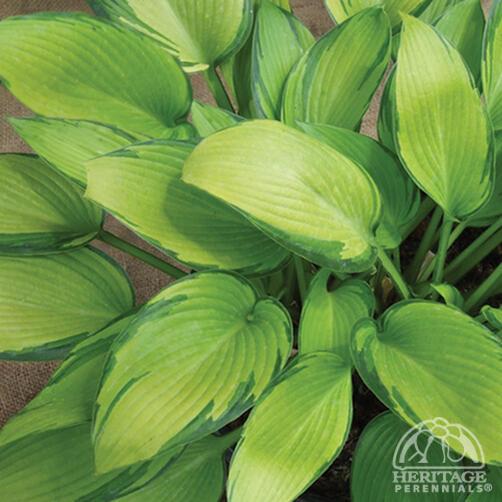Hosta ‘June Fever’
Plant number: 1.277.030Hosta are among the most popular of perennials for shady areas, with hundreds of varieties now readily available. Plants form a sturdy mound of foliage, topped with lily-like blooms. This midsized specimen selection has bright yellow leaves with a narrow blue-green margin that streaks inward. Centres change to chartreuse by midsummer. Lavender flowers appear in July. Suitable for the shady border or for planting in mixed containers or tubs. Hosta go completely dormant in the fall, and the dying foliage can be removed any time before mid spring. Good slug resistance. Reported to have good sun tolerance. While deer enjoy eating Hosta, this variety may be slightly less palatable to deer than others. A sport of H.‘June’ registered by Jan Van den Top/Danny Van Eechaute in 2004. USPP#15340, CPBR#2850: unlicensed propagation prohibited. Further details for |
| All 302 results here | Alphabetical list of all 4,000+ perennials here |
Hosta ‘June Fever’
Plant number: 1.277.030Hosta are among the most popular of perennials for shady areas, with hundreds of varieties now readily available. Plants form a sturdy mound of foliage, topped with lily-like blooms. This midsized specimen selection has bright yellow leaves with a narrow blue-green margin that streaks inward. Centres change to chartreuse by midsummer. Lavender flowers appear in July. Suitable for the shady border or for planting in mixed containers or tubs. Hosta go completely dormant in the fall, and the dying foliage can be removed any time before mid spring. Good slug resistance. Reported to have good sun tolerance. While deer enjoy eating Hosta, this variety may be slightly less palatable to deer than others. A sport of H.‘June’ registered by Jan Van den Top/Danny Van Eechaute in 2004. USPP#15340, CPBR#2850: unlicensed propagation prohibited. Further details for |






